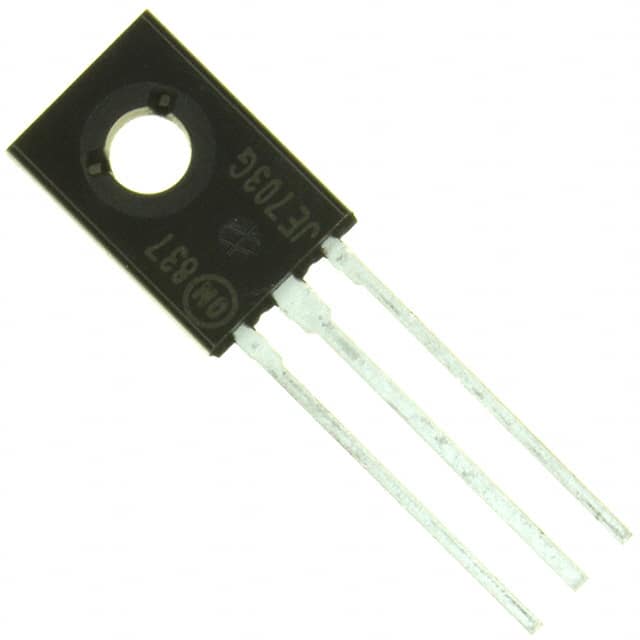Consulte las especificaciones para obtener detalles del producto.

AML2002 Product Overview
Introduction
AML2002 is a versatile integrated circuit that belongs to the category of analog-to-digital converters (ADCs). This device is widely used in various electronic applications due to its exceptional characteristics and functional features. The following entry provides a comprehensive overview of the AML2002, including its basic information, specifications, pin configuration, advantages, disadvantages, working principles, application field plans, and alternative models.
Basic Information Overview
- Category: Analog-to-Digital Converters (ADCs)
- Use: Conversion of analog signals into digital data
- Characteristics: High precision, low power consumption, wide input voltage range
- Package: Dual in-line package (DIP), surface-mount technology (SMT)
- Essence: Precision signal processing
- Packaging/Quantity: Available in tape and reel packaging, quantity varies based on supplier
Specifications
The AML2002 ADC features include: - Resolution: 12-bit - Sampling Rate: 1 MSPS (Million Samples Per Second) - Input Voltage Range: ±10V - Power Supply: 5V - Operating Temperature Range: -40°C to +85°C
Detailed Pin Configuration
The AML2002 has a standard pin configuration as follows: 1. VDD: Power supply input 2. VREF: Reference voltage input 3. VIN: Analog input 4. AGND: Analog ground 5. DGND: Digital ground 6. CLK: Clock input 7. DOUT: Digital output 8. CS: Chip select
Functional Features
- High-resolution conversion
- Low power consumption
- Flexible input voltage range
- SPI-compatible serial interface
- Internal reference voltage
Advantages and Disadvantages
Advantages
- High precision conversion
- Low power consumption
- Wide input voltage range
- Compact package size
Disadvantages
- Limited sampling rate compared to some newer models
- Requires external components for certain configurations
Working Principles
The AML2002 operates by converting analog input signals into digital data through a precise process of quantization. It utilizes an internal reference voltage to accurately measure the input voltage and produces corresponding digital output.
Detailed Application Field Plans
The AML2002 is suitable for various applications, including: - Data acquisition systems - Industrial automation - Instrumentation - Medical devices - Automotive electronics
Detailed and Complete Alternative Models
Some alternative models to AML2002 include: - AML2001: 10-bit resolution ADC - AML2003: 14-bit resolution ADC - AML3001: Higher sampling rate ADC
In conclusion, the AML2002 is a reliable and efficient analog-to-digital converter with high precision and versatile applications. Its specifications, functional features, and compatibility make it a preferred choice for many electronic designs.
Word Count: 387
Enumere 10 preguntas y respuestas comunes relacionadas con la aplicación de AML2002 en soluciones técnicas
What is AML2002?
- AML2002, or Application Modeling Language 2002, is a standard language used for modeling and describing technical solutions in the aerospace and defense industries.
How is AML2002 used in technical solutions?
- AML2002 is used to define and describe the structure, behavior, and interfaces of complex technical systems, allowing for better understanding and communication among stakeholders.
What are the key features of AML2002?
- AML2002 provides a standardized way to represent system architectures, components, and their relationships, as well as support for defining constraints and requirements.
Can AML2002 be integrated with other modeling languages?
- Yes, AML2002 can be integrated with other modeling languages such as UML (Unified Modeling Language) to provide a comprehensive view of the technical solution.
Is AML2002 widely adopted in the industry?
- AML2002 is commonly used in the aerospace and defense industries, and its adoption is growing due to its ability to facilitate system design and analysis.
Are there tools available for working with AML2002 models?
- Yes, there are various software tools and platforms that support AML2002 modeling, providing capabilities for creating, editing, and analyzing AML2002 models.
What are the benefits of using AML2002 in technical solutions?
- Using AML2002 can lead to improved system understanding, better communication among project teams, and more efficient development and maintenance of technical solutions.
Are there any limitations or challenges associated with AML2002?
- One challenge is the learning curve associated with mastering AML2002, as well as potential interoperability issues when integrating with other modeling languages.
Can AML2002 models be used for simulation and analysis?
- Yes, AML2002 models can be used as a basis for simulation and analysis to evaluate system performance, behavior, and compliance with requirements.
Is AML2002 suitable for documenting and managing changes in technical solutions?
- AML2002 provides a structured approach for documenting system changes and managing configuration information, making it suitable for maintaining technical solutions over time.

